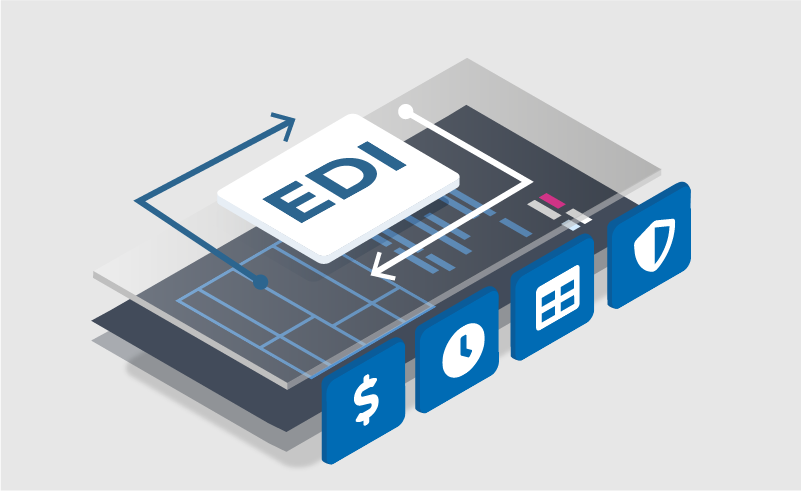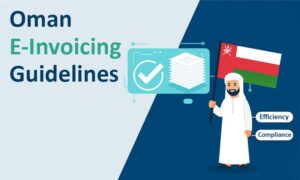
Overview and introduction
Electronic Data Interchange (EDI) is regarded as a powerhouse in B2B sales. According to a study by Forrester, EDI transactions are at more than 20 billion annually and growing. In 2019, EDI accounted for 78.9% – $7 trillion – of all B2B electronic sales, according to a data analysis report in the 2020 B2B E-commerce Market (1).
EDI dates back to the 1970’s and can be defined as an electronic exchange of data or information between businesses which is traditionally done on paper. To be more specific, an EDI is a ‘computer-to-computer’ exchange of information in a standardized format between the parties involved. At any given point, either of these parties can be a sender or recipient.
An EDI system operates like a ‘conversation’ of information, with messages sent between entities. If you look beyond file formats and data conversions, you’ll realize that EDI is in fact a direct communication channel. What’s more, EDI can facilitate a digital acquaintance between two ERPs or two independent business networks.
Working, standards, and usage
EDI is a standard-dependent process, notwithstanding transparency, digitization, and convenient data exchange. Therefore, unless necessary requisites are met, a document or data pertaining to a document cannot be processed using an EDI.
Certain standards are associated with EDI communication worldwide. Commonly used or accepted protocols consist of predefined formats (such as XML, JSON, etc.) required for transferring data across businesses. Some examples of these include: American National Standards (ANSI ASC X12 – ANSI), Accredited Standards Committee (ASC) X12,and Electronic Data Interchange for Administration, Commerce, and Transport (EDIFACT).
Along with these standards, different EDI systems vary when it comes to transmission and even usage. At its foundation, EDI can be broken down into two main methods.
The first is a Direct EDI method, which includes an unhindered single connection between a sender and a receiver, free from any intermediaries. The second is a Value-Added Network (VAN) EDI, in which a third-party service provider handles data transmission through secure channels to one or multiple recipients. These recipients can choose to follow the same communication protocol or a different one. It is then up to the service provider to arbitrate the data in the right format to match the recipient’s and sender’s requirements.
However, there are other varieties to consider. The Applicability Statement version 4 (AS4) EDI system offers ways to transport structured encrypted data between a sender and receiver system. Then there is the EDI via FTP/SFTP/VPN which uses Virtual Private Networks (VPNs), FTP (File Transfer Protocol), or SFTP (Secure File Transfer Protocol) for data communication with both encryption and decryption capabilities. Systems such as HTTPS-based protocols and Simple Object Access Protocols (SOAP) are also used for data interchange.
Understanding the need for EDI
Before we get into some of the EDI implementation necessities, let’s address the obvious question: Why use EDI? Below are just some of the most obvious reasons.
- EDI minimizes documentation expenses: Unnecessary expenses associated with paper, (such as printing, postage, filing, scanning, and document retrieval) are all reduced with EDI, if not completely eliminated. This lowers transactional costs and can free up resources for other projects. Companies have claimed that manually processing a purchase order is 35% more expensive than processing it through an EDI (2).
- Quicker turnaround and process facilitation: With EDI, data transactions can be done in minutes instead of hours. As a result, business cycles like supply chains, P2P, and O2C are sped up to improve overall functionality.
- Data accuracy and standardization: As a standard-specific process, EDI demands that data be systematically arranged in an acceptable file format. This feature directly implies accuracy and 40% reduction in errors from automation (2).
- Information accessibility and transparency: Since all information and data is electronically transmitted, everything is made available on the company network for easy access and analysis.
- Reduced manual dependency: Documents are processed most commonly between B2B channels directly from the ERP. As a result, the need to provide manual input in any process is reduced or eliminated.
- Security: Data is exchanged through secure portals and platforms, ensuring that it remains protected from tampering and corruption.
The decision to shift towards EDI can be a difficult one to make, and some companies will inevitably prefer the path of least resistance. Despite operational advantages, many systems need to be put into place before an EDI process can be successfully implemented. At the same time, avoiding the need to change entirely can lead to greater issues in the future.
One of the key drivers in the expanse of EDI implementation is the power map that an organizational giant inflicts on smaller or medium-sized companies. The pressure from competitors and large buyers to adapt to EDI functionality can become a deal-breaker in your decision-making while considering EDI integration.
Factually speaking, the supply chain is one of the most data-oriented departments or networks. And with the growing need for digitization, the supply chain can remain under an enormous amount of pressure to increase efficiency. Most manufacturing and logistics industries are constantly looking to improve their supply chain processes. Integrating resource planning platforms with electronic document exchange technology can help streamline workflows and improve performance.
It all adds to a new and improved B2B connectivity, and connectivity is everything. Trading partners realize this as the fundamental aspect of effective B2B sales and process completion. Let’s take sales order processing and procurement cycles as our examples.
According to a study, when orders are processed through EDI without manual intervention, the time from order to shipment is cut by half. An order that takes up to seven days to be processed manually now takes only three days or less if done through an EDI communication channel. Regardless of how orders are processed, almost 40% of the customers’ orders reportedly change at least once after getting placed. Once again, we see that EDI can reduce data reconciliation errors, quicken order processing, and reduce fulfillment errors compared to other methods.
When it comes to effective procurement, Advanced Shipping Notices (ASNs) and Purchase Orders (POs) are essential documents that help supply chains run smoothly. Lacking these documents can lead to longer wait times, shipment mismanagement, and lower efficiency for the overall transaction. According to the same study referenced earlier, 30% of orders are still received without the issuance of ASNs or other necessary B2B documents.
The estimated cost of processing a procurement order without an ASN or dispatch notice is $78 per order. This is unimaginably high when compared to the same process using an EDI, during which the cost is identified as anywhere between $0.01 – $0.02 per order (3).
All statistics aside, establishing an EDI channel can clearly invite complications and irregularities. However, even if you’re required to implement EDI due to partnering corporations, healthy EDI communications can lead to positive, long-lasting working relationships. The payoff can be tremendous regardless of why you choose to utilize EDI in the first place.
Moving forward, the implementation of EDI begs a series of questions that need to be answered before anything contrives. In fact, the decision of shifting towards EDI in itself is a reflective, immersive, and complex process. Let’s see which EDI method is best suited for your business.
References
- https://www.digitalcommerce360.com/2020/06/01/why-edi-still-has-a-big-role-to-play-in-b2b-ecommerce/
- https://www.edibasics.com/benefits-of-edi/
- https://www.gxs.co.uk/wp-content/uploads/EDI-Workhorse_of_the_Value_Chain.pdf
Other References
https://edi3.dicentral.com/edi-implementation
https://www.sciencedirect.com/topics/computer-science/electronic-data-interchange
https://www.ibm.com/in-en/topics/edi-electronic-data-interchange

